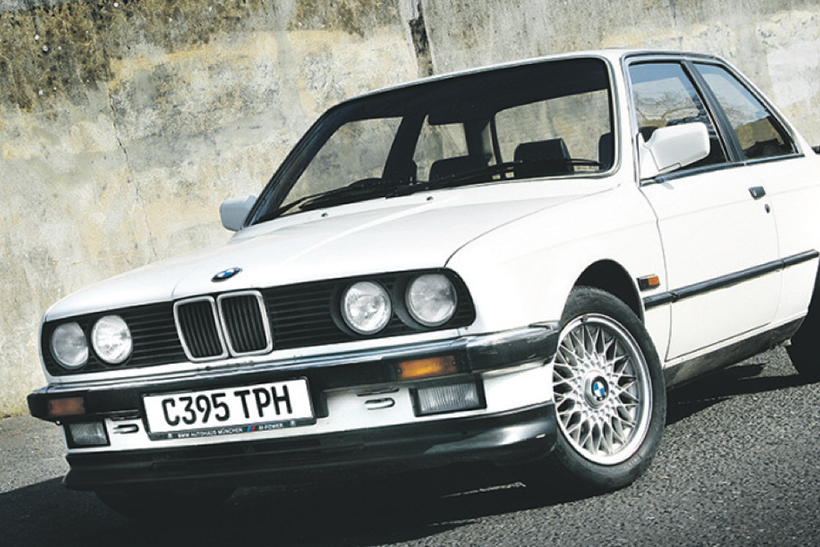With the E30, BMW created one of the most iconic cars of the ‘Eighties. Matthew Bell looks back on its various guises to better understand its enduring appeal.
1. EARLY DAYS
Six years on from its initial development, the BMW E30 3-Series began its production cycle in 1982 with four saloon variants; the 316 and 318i (four-pots), plus the 320i and 323i (sixes). It undeniably was a BMW product as the E30 continued the similarly understated looks of its predecessor, the outgoing E21. Changes were though made underneath the skin in an attempt to iron out the shortcomings of its dated sibling. Handling was targeted as an area for improvement and 40kg of weight was shaved, with the wheelbase also being increased 70mm. The rear suspension saw an overhaul with the coil and damper units now being mounted separately.
2. DROP-TOP
In 1985, BMW introduced the convertible version of the E30 at the Frankfurt Motor Show before it went on sale in January the following year. Sales went through the roof (pardon the pun) and production could barely keep up with demand. This was in part due to the efforts BMW had made to ensure the rigidity of the body; dynamically, the convertible was engineered superbly. The other reason for its success was because, at the time, there wasn’t really an alternative, particularly for UK buyers.
3. DIESEL RIVAL
The presence of its arch-rival, the Mercedes-Benz W201, meant that BMW constantly improved the 3-Series E30 so that it would remain competitive. Therefore, once the W201 was offered with a diesel powerplant, BMW introduced oil-burning variants of its own, badged in 1985 as the 324d and 324td.
4. FOUR WHEELS UP
The introduction of the M3 wasn’t the only first for BMW and the 3-Series; the Munich car maker also tried its hand at four-wheel drive. With the Merc 4-Matic and Audi 90 Quattro already on the market, BMW sought to put up a fight against its home- grown rivals in every aspect of the market. The 325iX arrived in 1985 and while the Quattro system in the Audi was well-established, it was generally considered that the 325 had bettered the 90. BMW used its expertise with its rear-wheel drive cars and applied it to a four-wheel drive system by splitting the torque delivery 37:63 front to rear. All four wheels being driven meant the front end had to be reworked to cope with the additional stresses, therefore a bespoke subframe was used to house the suspension, which included aluminium lower wishbones.
5. TECH WIZARD
Technology tends to filter down from a manufacturer’s flagship model. The E30 benefited from the trip computers which were already present on the 5- and 7-Series cars. Anti-lock brakes became available too and alloy wheels became much more popular on the E30, with all cars benefitting from 14-inch wheels as standard. Disc brakes all round came as standard on all models, with the six-pot cars receiving ventilated discs, although on the 323i they were later reverted to solid discs.
6. M POWER
Built as a homologation to the touring car that BMW had turned its hand to since its departure from Formula One, the M3 was the first road car to be produced by the marque’s fabled Motorsport Division. Instead of using a heavy six-cylinder engine, it utilised a highly-tuned four-pot. Besides the bonnet, the M3 shared no other part with its standard-spec siblings in the 3-Series range. Raw and uncompromising sports cars, derivatives of the M3 came in the shape of the Evolution I, II and III, all of which shed a little more weight each time, with handling more focussed and power incrementally increased.
7. NOT-SO-SPACIOUS ESTATE
As with all models in the range, the Touring was built with driving dynamics and build quality in mind. As a result, the introduction of the Touring in 1988 saw a car that lacked the space expected of an estate, but which still sold well due to its appeal with a younger audience. Particular attention was paid to maintaining the rigidity of its saloon and coupé counterparts – this meant that a new roof design was employed alongside strengthened side panels. All variants were fitted with disc brakes all round, and also had the option of anti-lock brakes. The 325i Touring was fitted with anti-lock brakes as standard.






